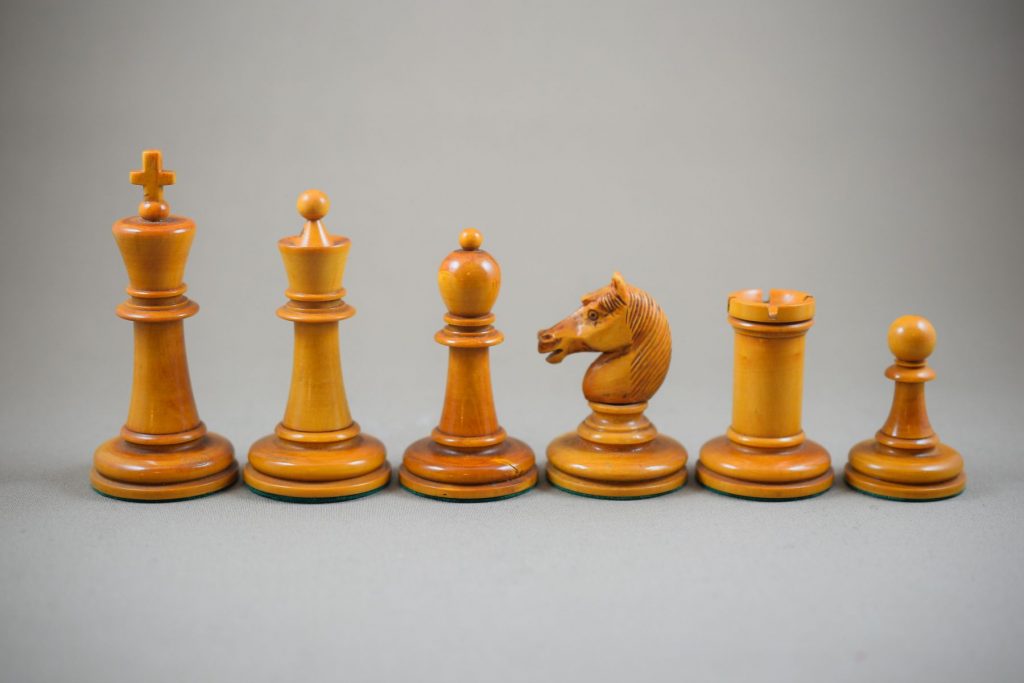
Yesterday, March 15, 2022, marked the one year anniversary of this site. To commemorate this notable event, I decided to publish a new article. It shall not only be a simple article, but it should rather be the first of a series of articles dedicated to German chess set makers of the 19th and early 20th century.
While English makers of that period, such as Calvert, Lund and Jaques, are well known, most German manufacturers of chess sets are not. Let’s change that! I will start with J.G.Gärtner, a 19th century craftsman from the East German town of Dresden.
Some time ago, I bought a chess set with unusual and exceptional knights and a very distinctive style. It was advertised as a set made of “hard plastic”. But what a surprise when I received it: the pieces were made of finest ivory. The style was clearly antique, i.e. 19th century, but I was not able to trace its origin. I discussed the set with several collectors, but without success. The origin of the set remained a mystery.

But as so often in life, no more than a little patience was required to shed light on the matter. Recently I discovered a wooden chess set that was not only crafted in a very comparable, almost identical design, but also had almost identical dimensions. Even if there are differences in some details, especially in the dimensions and quality of the knight heads, I am convinced that both sets come from the same workshop. Which workshop this is can be seen from the wooden set, because there is a stamp on both kings and queens, according to which the set was made by “J. G. Gärtner” in Dresden.

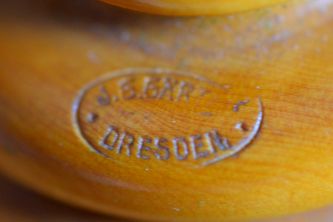
There are various references to J. G. Gärtner in old newspapers and directories. In the “Adreßbuch der Kaufleute, Fabrikanten und Gewerbsleute vom Königreich Sachsen” (Address book of the merchants, manufacturers and tradesmen of the Kingdom of Saxony) from 1870, there is an entry for Dresden for a master turner named Gärtner.(1)
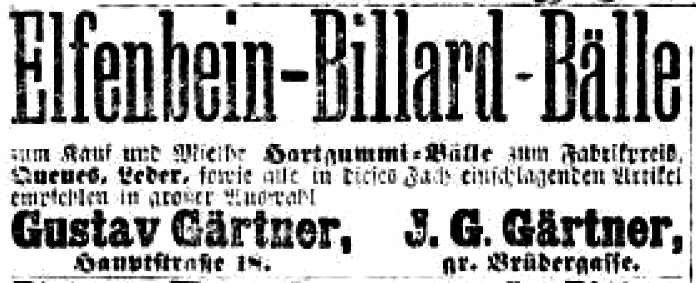
In the Dresdner Nachrichten of Tuesday, 19 September 1876, there is also a joint advertisement by Gustav Gärtner (with the address “Hauptstraße 18”) as well as J. G. Gärtner (with the address “gr. Brüdergasse”), advertising ivory billiard balls as well as other billiard accessories. I do not know the relationship between Gustav Gärtner and J. G. Gärtner. They could have been father and son, comparable to Thomas and William Lund, or brothers, as with Jaques.
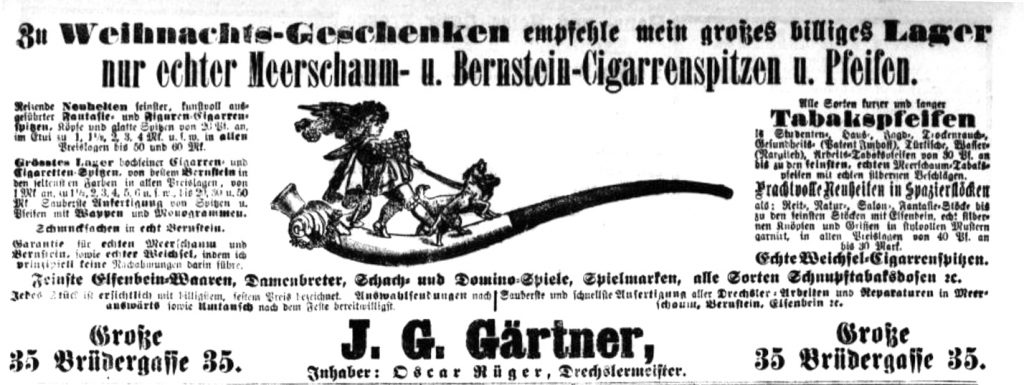
Sometime between 1876 and 1887, however, J. G. Gärtner must have given up or transferred his business, because in an advertisement from the Dresdner Nachrichten of 19 December 1887, the business is advertised again under the name J. G. Gärtner, but this time with the addition “Inhaber: Oscar Rüger, Drechslermeister” (owner: Oscar Rüger, master turner) and the address Große Brüdergasse 35. The assortment of advertised goods included meerschaum and amber cigar holders(2) and a wide variety of riding and walking sticks.(3) In addition, there is also an explicit reference to ” Feinste Elfenbein-Waaren, Damenbreter, Schach- und Domino-Spiele” (finest ivory goods, checkers boards, chess sets and domino games). It seems that the business moved some time later, as in yet another advertisement published in Dresdner Nachrichten of 5 February 1894, the address is given as Große Brüdergasse 2.

But apparently Gärtner not only produced chess sets in the Staunton pattern, as shown above. Some weeks ago I found a beautiful little ivory chess set made in the Selenus style. It also is without any doubt from the Gärtner workshop. Not only is the style of the knights very similar to the first set shown above, albeit with much smaller pieces. But the set also came in the original carton box with a Gärtner stamp and the inscription “Elfenbein”, which translates to “ivory”.

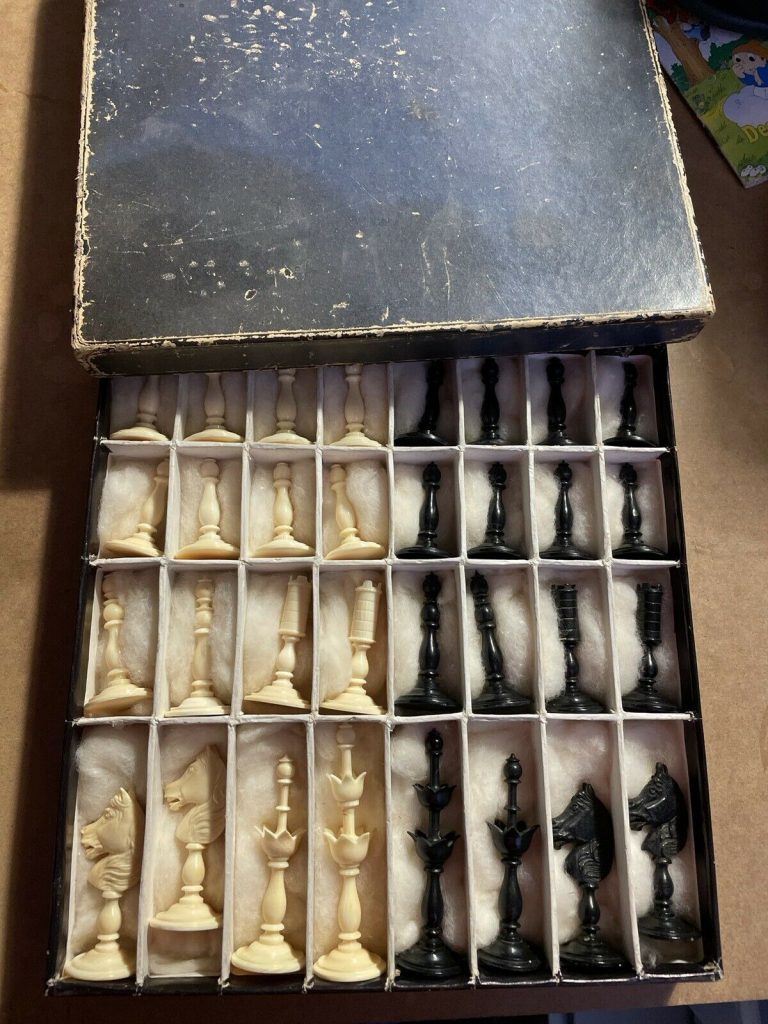
The above article was in part featured in my article “Roegner, Gärtner & Schmitthenner – three rather unknown German chess set makers”, published in The Chess Collector Magazine, Vol. XXX No. 3 November 2021.
It is also featured in my book “On the Collecting of Chess Sets”, which has just been released. If you are interested in obtaining a discounted copy, please check out my website for more details (including a reading sample).
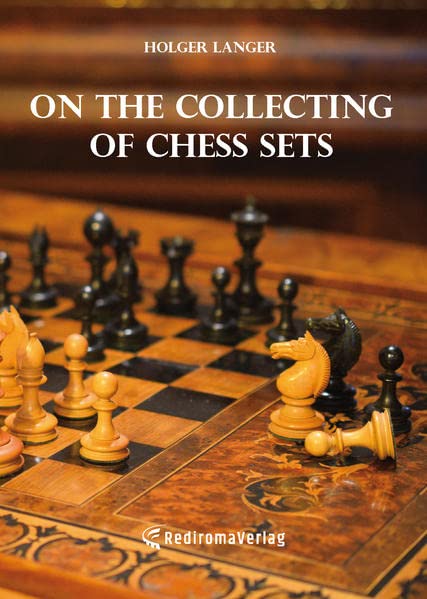
(1) Adreßbuch der Kaufleute, Fabrikanten und Gewerbsleute vom Königreich Sachsen, Nuremberg 1870, p. 5.
(2) Such cigar and cigarette holders were later sold in fitted boxes with Oscar Rüger’s name imprinted.
(3) The latter is referred to in a report on ivory art at the Leipzig Fair in Adolph Donath (ed.), Der Kunstwanderer: Zeitschrift für alte und neue Kunst, für Kunstmarkt und Sammelwesen, 4./5.1922/23, where it says: “In umbrella and stick handles, a special ivory art has developed. […] J. G. Gärtner (Dresden) showed engraved and painted ivory handles in all possible designs.”
